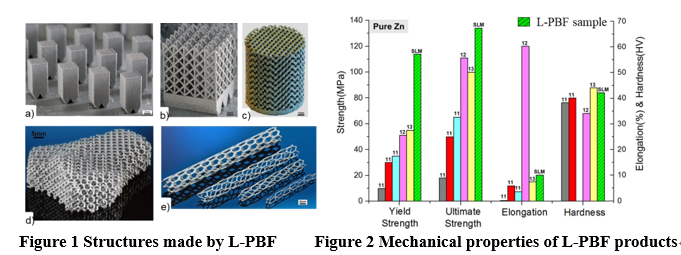Peng Wen, Ph.D
associate professor
the Department of Mechanical Engineering, Tsinghua University
Email: wenpeng@tsinghua.edu.cn
Biography:
Dr. Wen got his doctor degree in 2009 from Hiroshima University Japan. He joined in Dept. of Mechnical Engineering of Tsinghua University as an assistant professor in 2009 and got promoted to Associate Professor in 2014. His main research interests include laser material processing and welding. He has published more than 40 peer-reviewed papers in the above related fields.
Abstract:
Laser Powder Bed Fusion of Pure Zn Metal Parts for Biodegradable Implant Applications
Biodegradable metal is a hot topic for medical implants. It is not only excellent in me-chanical properties, but also can degrade in human body, without concerning long term damage and secondary surgery. Zn is an essential element in human body. Degradation of Zn is slower than that of Mg and faster than Fe, which is attracting attention as an ideal biodegradable metal. Laser powder bed fusion (LPBF) has unique advantages for manufacturing customized implants. However, the current research on additive manu-facturing of Zn metal is very limited. In this paper, porous and stent structures were demonstrated for typical application of biodegradable implants. The effect of processing parameters on density, surface quality and mechanical properties were discussed. The overlap remelting and good wetting behavior of Zn powder resulted to high density and good surface quality of LPBF products. The density was over 99.9% and the lowest sur-face roughness was about 10μm for optimal processing conditions. The average values of hardness, elastic modulus, yield strength, ultimate strength and elongation was 42HV, 23GPa, 114MPa, 134MPa, and 10.1% respectively for LPBF produced pure Zn parts, superior to those of samples obtained by most manufacturing methods like casting and rolling. The good mechanical properties were contributed to high densification and fine grains. A typical cleavage fracture mode was observed with intragranular cracks, cleav-age steps and cleavage planes surrounded by tearing ridges at the fracture surfaces. It was the first time to obtain Zn metal implant structures by additive manufacturing, and manifest the mechanical properties. The results provided theoretical and experimental support for the application of additive manufacturing of Zn based biodegradable metal implants.

